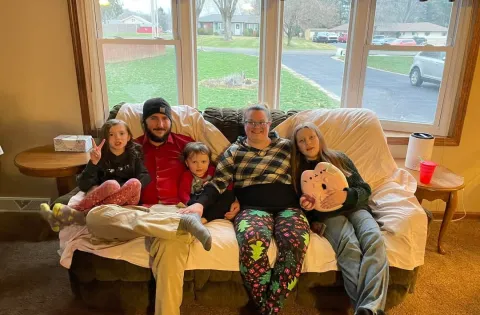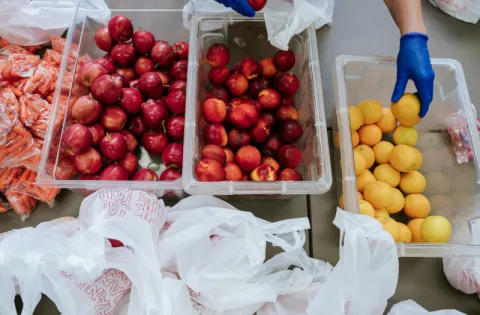
UPDATE (1/25/19 4 pm): Today, the Administration reached a deal with Congressional leaders on a short-term bill to reopen the government after a 35-day partial shutdown. The bill, which was voted on quickly by Congress, provides funding for the government through Feb. 15. Learn more here.
UPDATE (1/17/19 12 pm): Due to the ongoing partial government shutdown, most SNAP recipients will receive full February benefits on or before Jan. 20. These benefits will be automatically loaded on their electronic benefit transfer (EBT) cards and will need to last through the month of February. Future benefits and disbursement dates are still unknown. Learn more here.
UPDATE (1/9/19 7 am): On Day 18 of the partial government shutdown, NBC News reports that Fairfax County school district in Northern Virginia – home of many furloughed federal employees – has “committed to providing breakfast and lunch to all students regardless of ability to pay in order to support families affected by the shutdown.” Learn more here.
UPDATE (1/8/19 10:15 pm): President Trump’s speech tonight did not mention the impact the shutdown has on low-income families or local economies. The New York Times has a solid fact-check piece on what he did talk about, though - Learn more here.
UPDATE (1/8/19 7:45 pm): The USDA tonight announced that SNAP will be fully funded through February, using a payment system similar to the one used in disaster relief. As NBC News reports, “While officials committed to SNAP being paid through February, they could not do the same for March or beyond.” Learn more here.
Note: We will continue to update this post as new information comes available about the shutdown and the impact it is having on families and children.
# # #
President Trump will address the nation tonight to talk about the ongoing partial government shutdown. Now in its third week, this is the one of the longest shutdowns on record in United States history.
As government grinds to a halt, so do the agencies that play an essential role in the lives of millions of families across the country. Shutting down the departments that oversee food assistance programs serving families, children and seniors (USDA), low-income housing (HUD), Native American services (Interior) and immigration (DHS) will have very real consequences for the children that the No Kid Hungry campaign works to serve.
For example:
Food for Families
The Supplemental Nutrition Assistance Program (run through the Department of Agriculture) helps low-income families purchase groceries every month. During the shutdown, the staff who manage the program has been cut by 95% and the funding has been shut off. While January’s benefits will be provided, the government estimates that if no additional steps are taken, existing funds could run out in February, leaving 40 million Americans (two-thirds of whom are kids, the elderly or disabled) unable to afford the food they need
Food for Mothers and Babies
The Special Supplemental Nutrition Program for Women, Infants, and Children (WIC) helps pregnant women, infants and children up to age five with food, nutrition education, breastfeeding support and health care referrals. No longer receiving new federal funds, the program is now relying on available state or local funds. Families are currently able to receive benefits, but a prolonged shutdown could put a burden on these resources and cause a reduction or even termination of benefits in the future. As the National WIC Association wrote in their recent statement, “The uncertainty and confusion that a shutdown causes is not only disruptive to people’s lives but could also lead to significant health consequences if babies and young children lose access to nutritious foods and vital breastfeeding support. If the shutdown lasts for several weeks, families will be forced to make hard choices about how to feed their newborn babies.”
Housing
Under the shutdown, rental assistance payments -- which help poor families afford housing -- may soon be suspended by the Department of Housing and Urban Development (HUD). And with the majority of housing employees forced to stop work, the agency also is no longer conducting health and safety inspections of housing for low-income families. This lapse in services only exacerbates health conditions and strains already-tight finances, making it harder for these families to put food on the table.
There are many other programs affected, including child care and nutrition assistance resources for Native American communities, subsidized grocery stores for military families and immigration cases in the court system.
On top of this, many low-paid government workers are forced to stay home, unpaid, while the shutdown continues, leading to even more financial instability. This leads to a ripple effect in communities with a high population of furloughed employees, with a loss of revenue to local restaurants, grocery stores and small businesses, causing further financial hardship for employees and staffers in these establishments.
Food banks, other nonprofits and community clinics are attempting to fill the gap, but charity cannot replace the role of the federal government.
The shutdown already has consequences for communities across our nation. If it continues, low-income families, children and seniors are at serious risk of losing food and housing and threatening their health, housing security and well-being.
We urge President Trump and Congress to quickly reopen the government.


